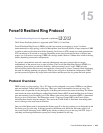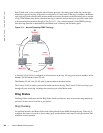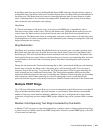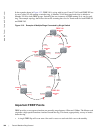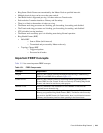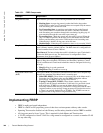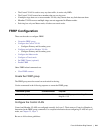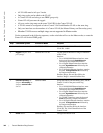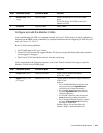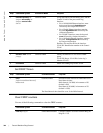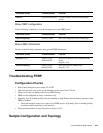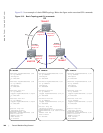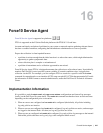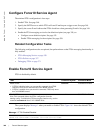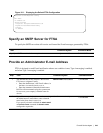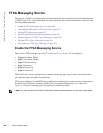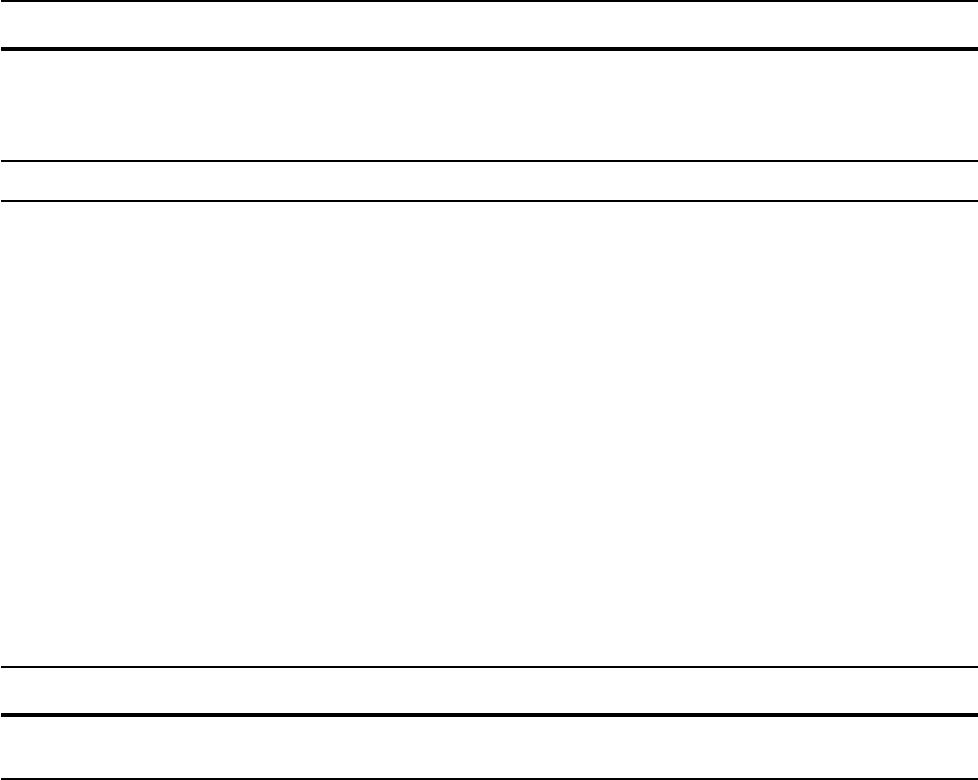
Force10 Resilient Ring Protocol | 343
Configure and add the Member VLANs
Control and Member VLANS are configured normally for Layer 2. Their status as Control or Member is
determined at the FRRP group commands. For complete information about configuring VLANS in Layer 2
mode, see Chapter 25, Layer 2.
Be sure to follow these guidelines:
• All VLANS must be in Layer 2 mode.
• Control VLAN ports must be tagged. Member VLAN ports except the Primary/Secondary interface
can be tagged or untagged.
• The Control VLAN must be the same for all nodes on the ring.
Use the commands in the following sequence, on all of the Transit switches in the ring, to create the
Members VLANs for this FRRP group.
5 member-vlan vlan-id
{range}
CONFIG-FRRP Identify the Member VLANs for this FRRP
group
VLAN-ID, Range: VLAN IDs for the ring’s
Member VLANS.
6
no disable
CONFIG-FRRP Enable FRRP
Step Command Syntax Command Mode Purpose
1 interface vlan vlan-id CONFIGURATION Create a VLAN with this ID number
VLAN ID: 1-4094
2 tagged interface slot/
port {range}
CONFIG-INT-VLAN Tag the specified interface or range of interfaces
to this VLAN.
Interface:
• For a 10/100/1000 Ethernet interface, enter
the keyword keyword GigabitEthernet
followed by the slot/port information.
• For a Gigabit Ethernet interface, enter the
keyword GigabitEthernet followed by the
slot/port information
• For a SONET interface, enter the keyword
sonet followed by slot/port information.
• For a 10 Gigabit Ethernet interface, enter the
keyword TenGigabitEthernet followed by
the slot/port information.
Slot/Port, Range: Slot and Port ID for the
interface. Range is entered Slot/Port-Port.
Step Command Syntax Command Mode Purpose



